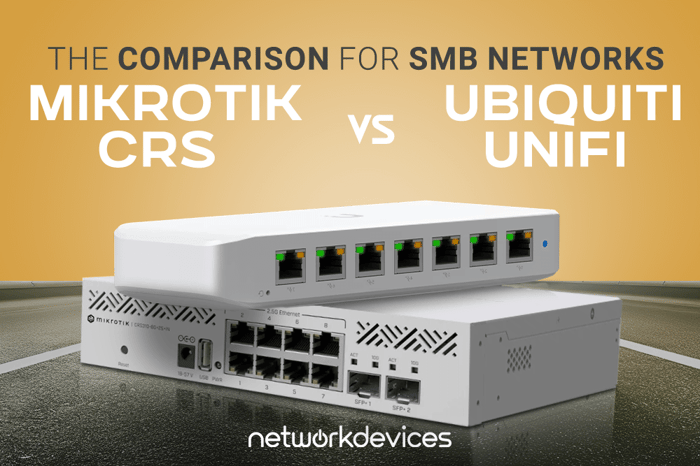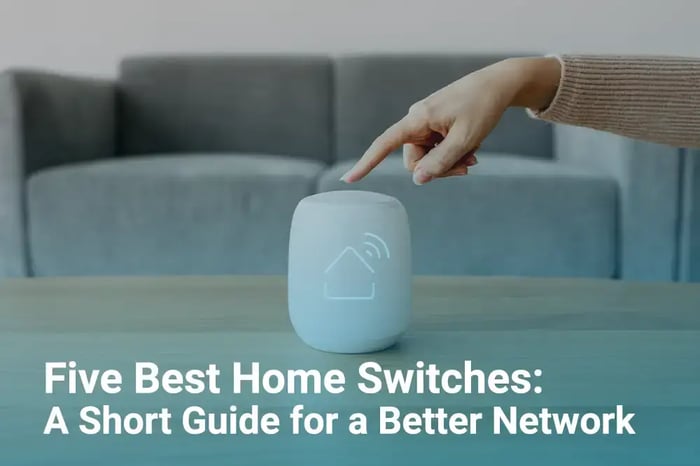You have no items in your shopping cart.
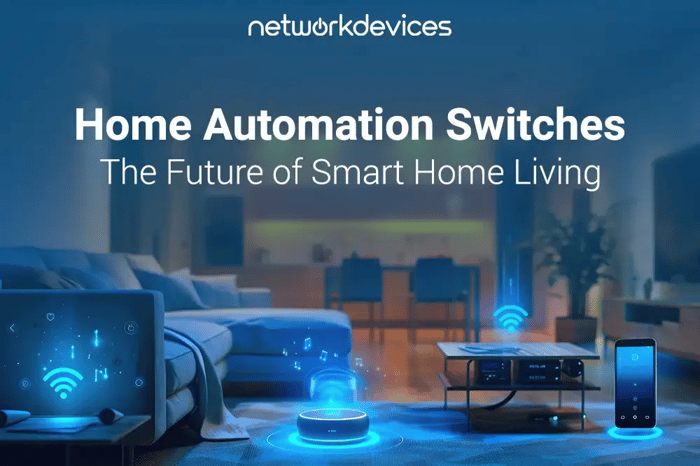
Home Automation Switches: The Future of Smart Home Living
As smart home technology continues to evolve, home automation switches have become central to creating a more convenient, energy-efficient, and secure living environment.
Statistics show that there are around $300 million in smart homes worldwide.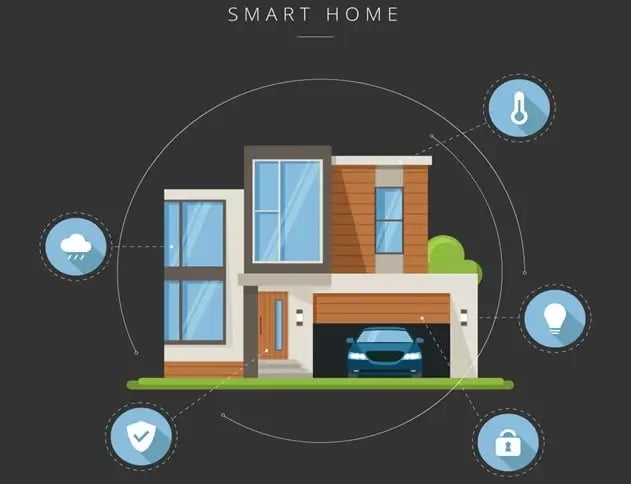
These switches enable seamless control of lighting, temperature, and security systems, all from the comfort of your smartphone or through voice commands.
With millions of smart homes around the world, the demand for home automation systems is steadily rising. Let’s explore how smart switches transform modern living and what you should consider when upgrading your home.
What Are Home Automation Switches?
Home automation switches are smart devices that connect to your home’s Wi-Fi network, allowing you to control various functions like lighting, security, and temperature from your smartphone or voice assistant.
The smart home technology market is projected to grow to about $138 billion by 2026. This rapid growth reflects how quickly consumers are adopting smart technologies.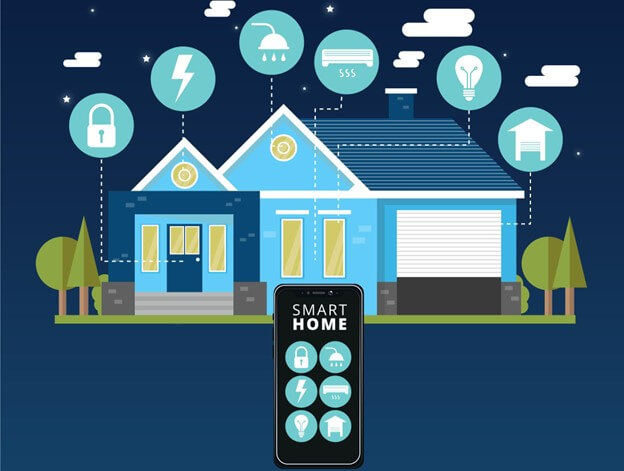
Smart home systems can learn your habits and preferences and make adjustments automatically. This evolution has made homes not just smarter but also more efficient and comfortable.
You can also program these switches to follow schedules. For example, you can set your lights to turn on at sunset or have your thermostat adjust the temperature before you arrive home. This level of control can enhance convenience and save energy.
Integration with Other Smart Devices
Home automation switches work best when integrated with other smart devices in your home. They can connect with security cameras, door locks, and appliances to create a cohesive smart home ecosystem. For example, when you unlock your front door, your smart lights can turn on automatically, welcoming you home.
As of 2023, 44% of smart homes have connected entertainment systems with smart home ecosystems.
There are different types of automation switches. Some switches are manual, but they connect to apps.
On the other hand, some switches can be completely controlled through voice assistants like Alexa or Google Home These make it easy to adjust settings in your home without physically interacting with the switch.
Top 5 Benefits of Smart Home Switches
Home automation switches provide a variety of advantages that enhance both convenience and efficiency.
57% of Americans say that having smart products in their homes saves them about 30 minutes per day, which adds up to roughly 182.5 hours a year.
Here are the top 5 main benefits:
1. Enhanced Home Convenience
You can control multiple devices in your home from one place, such as a smartphone or a voice assistant.
This allows you to adjust lights, appliances, or temperature without physically touching the switches.
For example, you can program your lights to turn on at sunset or have your coffee maker start brewing in the morning.
2. Energy Efficiency
One significant benefit of smart home switches is reducing energy usage. By using timers or motion sensors, you can ensure lights only turn on when needed, lowering your energy bills.
Many smart switches even provide energy monitoring features.
3. Enhanced Security
Integrating smart switches with home security systems allows you to control lights, alarms, and cameras remotely. You can program lights to turn on at specific times when you're away, giving the illusion that someone is home.
4. Personalized Customization
Home automation switches offer a high level of customization. You can tailor settings to fit your lifestyle and preferences. For example, if you enjoy reading in the evening, you can set specific lighting levels for that time of day.
You can also create “scenes” that adjust multiple devices simultaneously with a single command.
For instance, a “movie night” scene could dim the lights and turn on the TV with just one tap or voice command. This level of personalization allows homeowners to create an environment that perfectly suits their needs.
5. Accessibility
Lastly, home automation switches improve accessibility. They are especially helpful for people with mobility issues or disabilities.
Instead of struggling to reach a switch, they can control devices with their voice or a mobile app. This makes everyday tasks simpler and more manageable for everyone in the household.
Choosing the Right Smart Switch: Essential Features
When selecting home automation switches, here are some key features to consider:

Compatibility with Smart Home Systems
Ensure that your smart switch is compatible with your existing smart home ecosystem—whether it's Amazon Alexa, Google Home, or Apple HomeKit.Easy Installation Process
Some switches are designed for DIY installation, while others may require professional setup. Choose one that fits your technical skills.Dimming and Lighting Control
Look for smart light switches with dimming capabilities to adjust the brightness of your lights and create the perfect ambiance.Smart Scheduling and Automation
Choose a switch that lets you automate your home by setting schedules. This allows for lights and other devices to follow daily routines, such as turning off when not in use.Energy Monitoring Features
Smart switches that track your energy usage help you identify areas where you can save on electricity.Built-in Safety Features
Ensure the smart switch includes features like surge protection or overload prevention to safeguard your home.
Challenges of Using Smart Home Switches
While smart home switches offer many benefits, there are some challenges and considerations to keep in mind before installing them:
● Privacy and Security: One of the biggest concerns with smart devices is privacy. Since smart switches are often connected to the internet, they can be vulnerable to hacking. Choosing switches with strong security features, such as encryption and regular software updates, is important.
● Compatibility Issues: Not all smart switches work with every smart home system. Before purchasing, ensure that the switches you choose are compatible with your current devices, such as your voice assistant or smart hub.
● Cost: While smart switches can save energy and provide convenience, they can also be expensive to install. The initial cost of the switches and the potential professional installation fees can add up.
● Wi-Fi Dependence: Smart switches need a stable internet connection to function properly. If your Wi-Fi goes down, you may lose control over your devices. Make sure you have a reliable Wi-Fi network, and consider backup options in case of connectivity issues.
● Learning Curve: Smart switches come with apps and features that may take some time to understand. There can be a learning curve, especially for people who are not tech-savvy.
The Future of Home Automation: Trends to Watch
As technology evolves, the future of home automation switches looks bright. Here are some key trends:
AI and Machine Learning
- Smart switches are becoming more intelligent. Over time, they will learn your preferences and adjust automatically based on your daily habits.
- For example, AI-driven switches can turn off lights and appliances when no one is home, reducing energy waste.
Sustainability and Energy Efficiency
- With increasing awareness of energy conservation, more smart devices are being designed with energy-saving features, such as monitoring energy usage and automating power-downs to reduce electricity consumption.
Interoperability
- The future of home automation switches will focus on interoperability—making sure that devices from different brands and platforms can seamlessly connect and communicate.
- This will make it easier for users to integrate all their smart devices without worrying about compatibility issues.
5G and Faster Connectivity
- Smart home devices will benefit from faster and more reliable internet connections with 5G connectivity.
- This will allow automation switches to respond quicker and communicate with other devices more efficiently.
- Faster connectivity will also support more complex systems so that homes can become fully automated with minimal delay or interference.
Conclusion
Home automation switches are revolutionizing how we live, providing enhanced convenience, security, and energy efficiency.
As smart home technology continues to advance, these switches will become essential in making our homes more intuitive, sustainable, and efficient.
Whether you’re exploring the benefits of smart switches for the first time or upgrading your current system, they offer a world of possibilities for effortless living.
You can also read Home Network Security: Switch Protection article.


